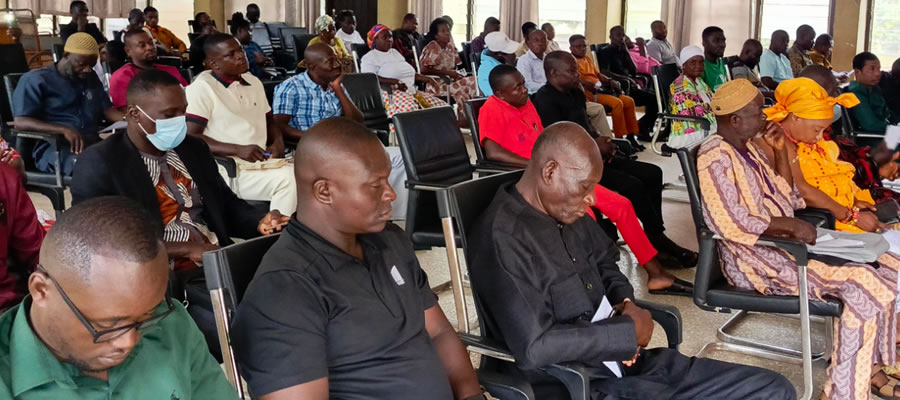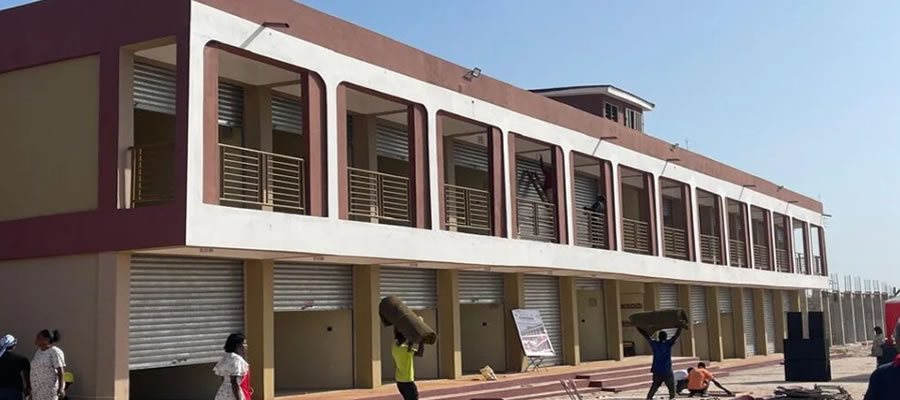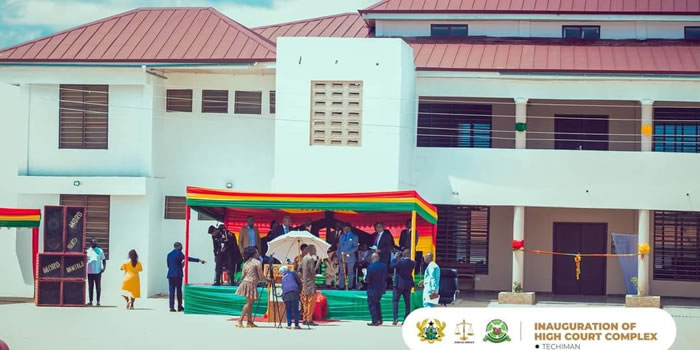

Location and size
The Techiman Municipality is situated in the central part of the Brong-Ahafo Region and lies between longitudes 10 49` east and 20 30` west and latitude 80 00` north and 70 35` south. It shares common boundaries with four districts namely, Techiman North, Wenchi, and Nkronza Municipalities in the Brong-Ahafo Region and Offinso-North District in the Ashanti Region.
The Techiman Municipality has a land surface area of 649.0714 sq. km. The population density therefore is 227.7 persons per square kilometer. This is very high and has implications for the socio-economic development of the Municipality. The Municipality covers a land area of 669.7km2 representing approximately 1.7% of the land area of the Brong-Ahafo Region. The Municipal capital, Techiman, is a nodal town, where roads from the three northern regions (Upper West, Upper East and Northern Regions) converge. In addition, trunk roads from Sunyani, Kumasi, Wa and Tamale all meet at Techiman thus making it a bustling 24 hours commercial centre. The dominant commercial activities are transportation, catering services, wholesale and retail trade, and mobile phone services.
Relief and drainage
The topography of the Municipality is generally low lying and gently undulating. Furthermore, the main relief features are plane lands and lowlands. The lowest topography of about 305m is found around Nsuta in the south-western part of the Municipality.
The major rivers that drain the Municipality are the Tano River to the south, Subin and Kar rivers to the North. Other minor rivers include Brewa, Traifi, Kyini and Fia. The Tano River is dammed at Tanoso, in the South of the Municipality, to supply pipe-borne water to the residents of Techiman and its environs and also for irrigation purposes. The potentials of these rivers and streams notably Tano, Fia, Subin, Kyini and Brewa as resource for small scale irrigation is yet to be fully harnessed.
Geology and minerals
The Municipality is underlain by the Voltarian and Belt Granite rock formations. The voltarian formation covers about 90 percent of the total land area and is rich in sandstones, shales, mudstones and limestones, which can be harnessed for the ever expanding building and road construction sectors in the Municipality. The Belt granite formation is found around Nsuta, Agosa and Mangoase in the South-western part. The quarry serves as potential building and constructional material source for both industrial and domestic needs of the Municipality.
Climate and vegetation
The Municipality experiences both semi-equatorial and tropical conventional or savanna
climates, marked by moderate to heavy rainfall. Major rains normally begin from April and
end in July. The minor rains on the other hand, begin from September to October. The mean
annual rainfall ranges between 1260mm and 1660mm.
The only dry season, which is highly 4
pronounced in the Savanna zone, starts in November and lasts until March in the following
year. Within this period the average highest monthly temperature of about 300C (800
F) is
recorded. The low monthly temperatures occur mostly between March and April with the
lowest of about 200C (790
F) occurring in August. Relative humidity is generally high
throughout the year.
Date Created : 12/5/2017 4:41:40 AM












 facebook
facebook
 twitter
twitter
 Youtube
Youtube
 +233 593 831 280
+233 593 831 280 0800 430 430
0800 430 430 GPS: GE-231-4383
GPS: GE-231-4383 info@ghanadistricts.com
info@ghanadistricts.com Box GP1044, Accra, Ghana
Box GP1044, Accra, Ghana